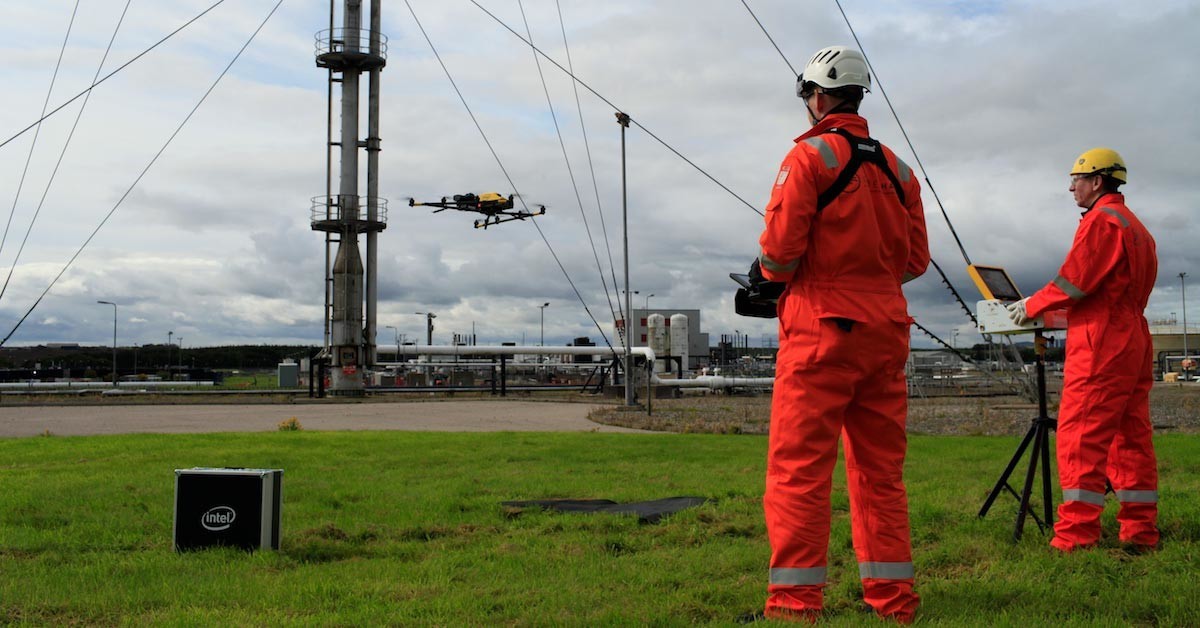
Drones: Making Work Safer, Providing Deeper Insights

The Internet of Things (IoT), robotics and artificial intelligence (AI) are introducing new business possibilities across a range of industries. Consider drone technology, which has quickly moved from a novel and experimental form of aviation to an essential tool for efficiency, safety and new insights across industries including agriculture, construction, utilities and oil & gas.
For example, in the oil & gas sector, commercial-grade drones or unmanned aerial vehicles (UAV) are deployed for aerial inspections and site modeling, helping to reduce operating costs, providing useful operational data and increasing worker safety. This includes remote monitoring of critical assets in conditions that pose dangers to inspection teams.
In the past, teams of technicians have performed inspections of heavy industry in the field. Not only time-consuming, these tasks are regularly undertaken in hazardous conditions like driving wind and rain. Consider the large and complex St. Fergus gas terminal in Scotland where the resource-intensive process previously required taking the plant offline for manual inspections.
Today, Intel® Falcon™ 8+ drones have become critical to facilities like St. Fergus because these aerial robots can withstand the extreme weather conditions of northern Scotland while generating highly accurate and useful data. Drones can verify structural integrity and monitor rust, cracks, and general wear up close. Software like the Intel® Insight Platform then processes and analyzes the data to increase productivity while conserving resources.
In addition, UAV deployments benefit plant operators by providing capabilities for predictive maintenance, timely inspections, faster equipment repairs, production planning and more.
“The way we conduct inspections is changing,” says Anil Nanduri, Vice President and General Manager within Intel’s New Technology Group. “Drones make inspection workflows faster, cheaper and safer. The technology is mature enough to be adopted into the workflows of our customers.”
It’s also representative of how innovative technology is driving business transformation. In the new economy, the flow of information and the analysis of that data has dramatically changed business processes and led to faster decision-making. Drone deployments in the oil and gas sector are an example of using that innovation to increase employee safety, improve planning and maximize efficiency.
In fact, it’s difficult to understate the value of these new digital capabilities. According to research, industrial digitization is expected to generate $421 billion in cost reductions and additional revenue through 2021. And drone technology represents a key part of the digital revolution that’s helping to transform the oil and gas sector.
For oil and gas terminals like St. Fergus, the Intel® Falcon™ 8+ drone is key to achieving these new operational thresholds. Designed to withstand windy conditions and built with the best power-to-weight ratio of any platform on the market, the Intel® Falcon™ 8+ drone is perfect for the challenging conditions found in Scotland, enabling St. Fergus operators to collect detailed data for inspections and close mapping.